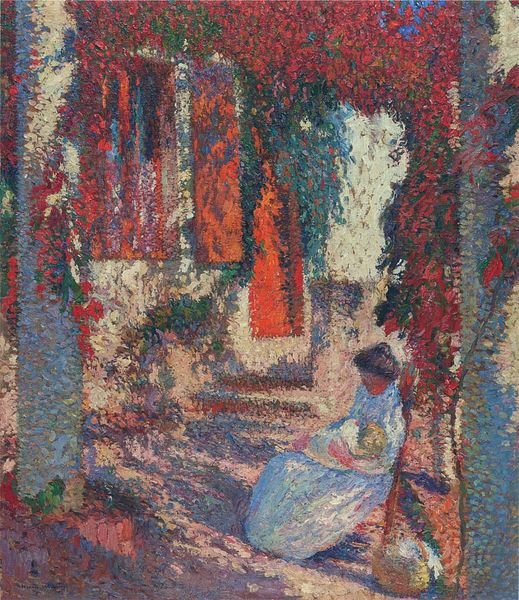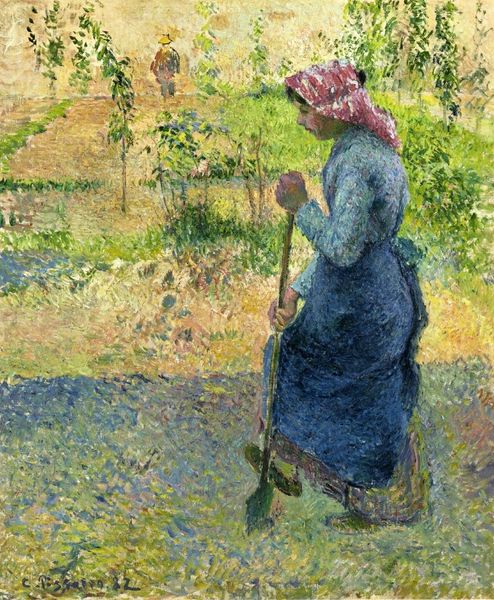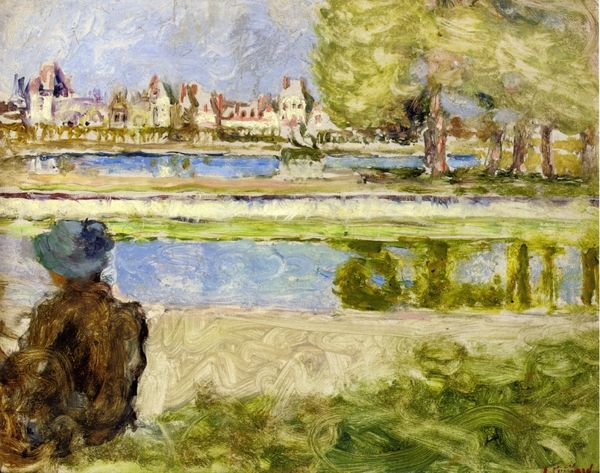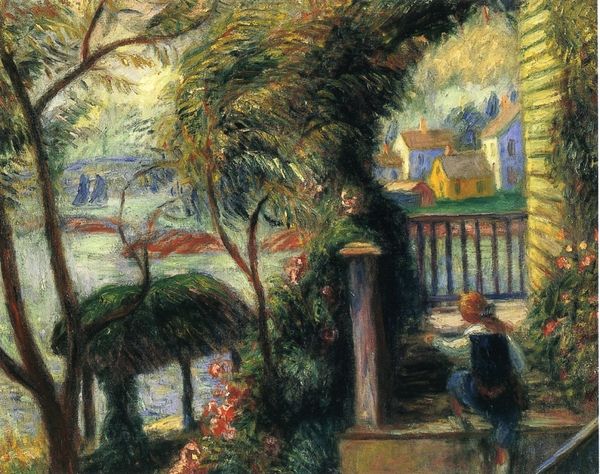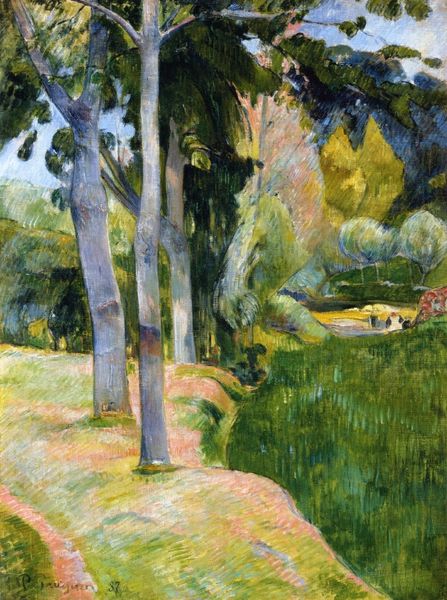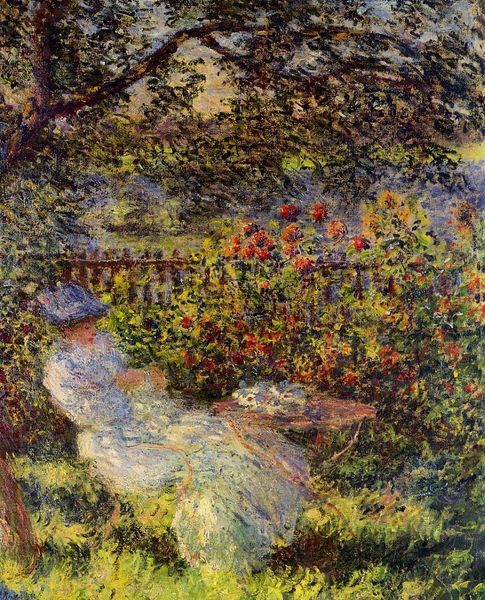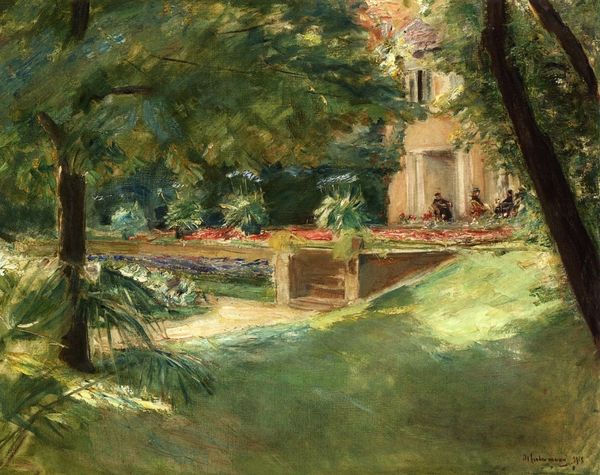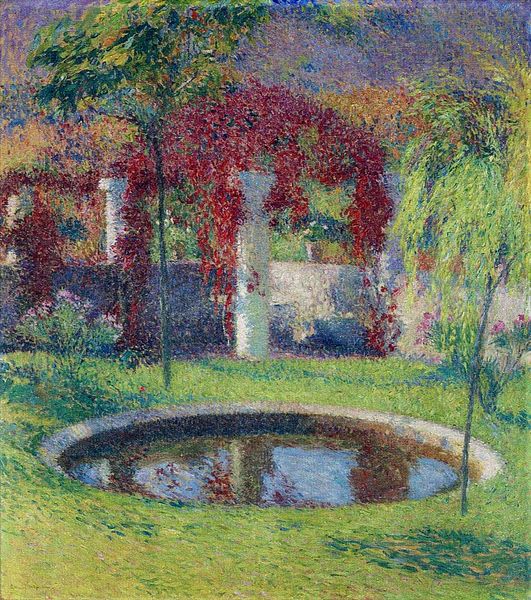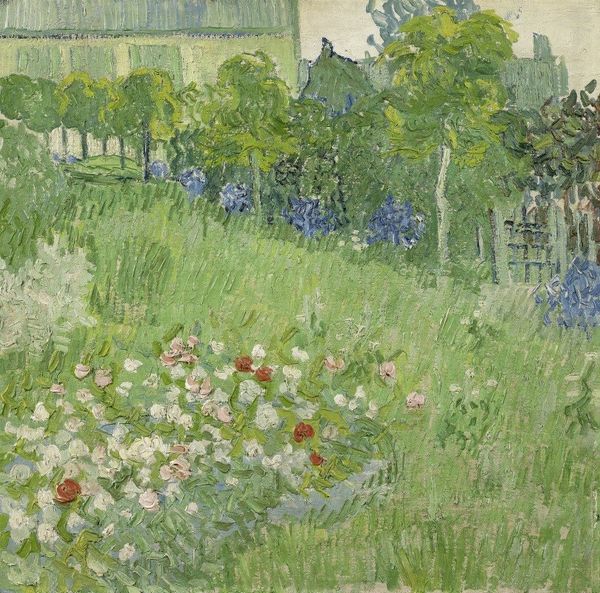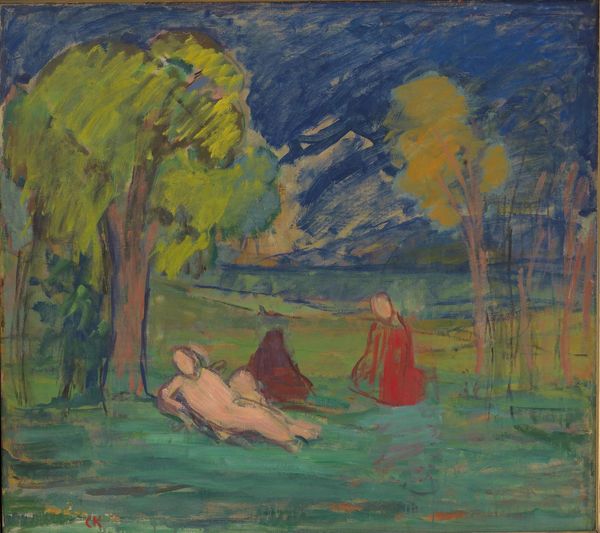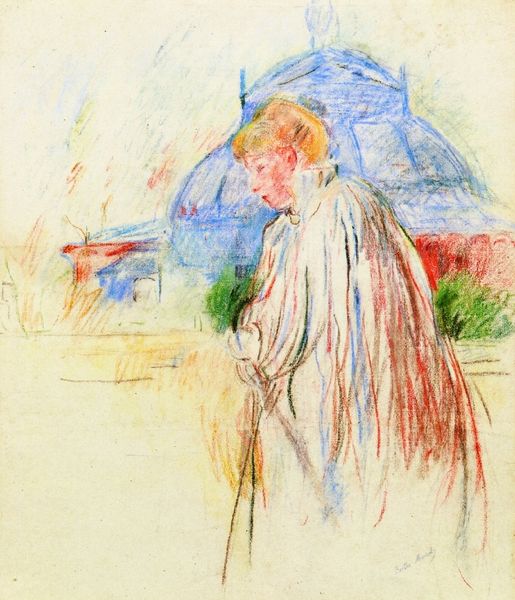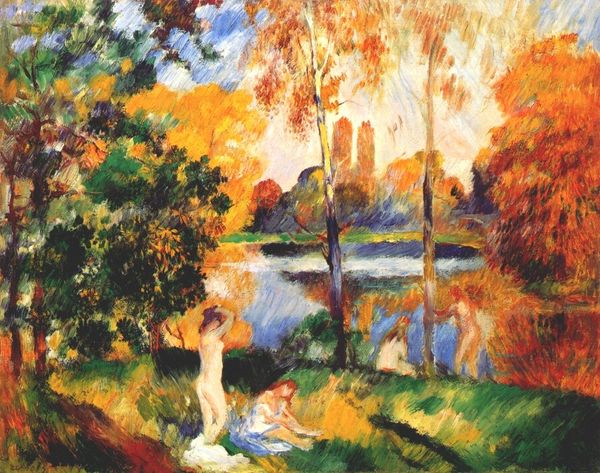
painting, plein-air, oil-paint
#
portrait
#
painting
#
impressionism
#
impressionist painting style
#
plein-air
#
oil-paint
#
landscape
#
impressionist landscape
#
oil painting
Copyright: Public domain
Curator: This is Claude Monet’s "Woman in a Garden," painted in 1876. Notice how Monet captures the woman en plein air amidst lush greenery. What strikes you most about this scene? Editor: The overall feeling is dreamlike. It’s softly focused, almost as if filtered through memory, the woman blends with her surroundings as though she’s an extension of the garden. I can almost feel the warm summer sun and the scent of flowers. Curator: Absolutely. Monet’s mastery lies in conveying atmosphere through light and color. As an iconographer, I observe how light functions as a powerful symbol here, representing clarity, serenity, and the vibrancy of life. Light literally and figuratively dissolves boundaries. What deeper narratives emerge for you? Editor: I see a commentary on the representation of women in art, particularly within the context of the burgeoning Impressionist movement. This painting diverges from traditional portraiture of the era. Rather than presenting her as an object of desire or status, she’s placed within nature, hinting at ideas around women's relationship to naturalness and perhaps liberation from restrictive societal expectations. The garden itself can be a symbol of both freedom and confinement, echoing the complex role of women in that period. Curator: That is insightful, bringing the outside context into focus! To further expand on this, gardens, historically, have been depicted as spaces of retreat, contemplation, and perhaps even hidden knowledge. Is this an intentional parallel being drawn by Monet, consciously or not, between this woman and symbolic interpretations of Eden or other mythical gardens? The absence of defining lines almost obscures the figure of the woman, she loses her specific personal narrative. Editor: It also begs the question of agency, or lack thereof. Is she actively present in the garden, or is she simply part of the scenery, blending passively with nature? Perhaps this reflects the limited roles afforded to women during this time, both celebrated and suppressed by nature. Curator: A rich tapestry of ideas to consider! It illustrates how paintings serve as cultural mirrors, reflecting, and sometimes subtly challenging, the norms and expectations of their time. The way in which we still question those norms through this very painting is its cultural echo. Editor: It also proves the radical shift Impressionism offered from the formal representation that dominated art academies, bringing a focus on lived experience and everyday life and bringing into question women’s cultural position. It continues to invite viewers to consider art's role in shaping and reflecting society's narrative of identity.
Comments
No comments
Be the first to comment and join the conversation on the ultimate creative platform.
